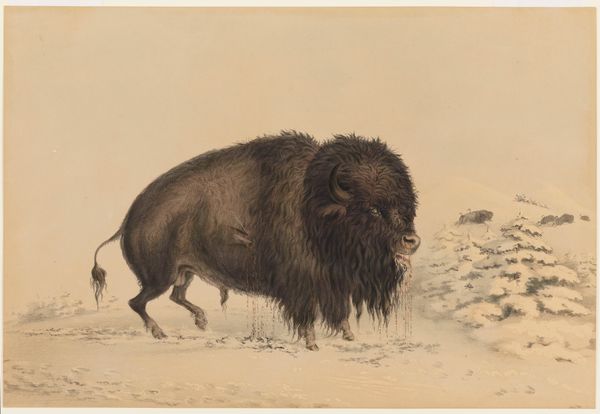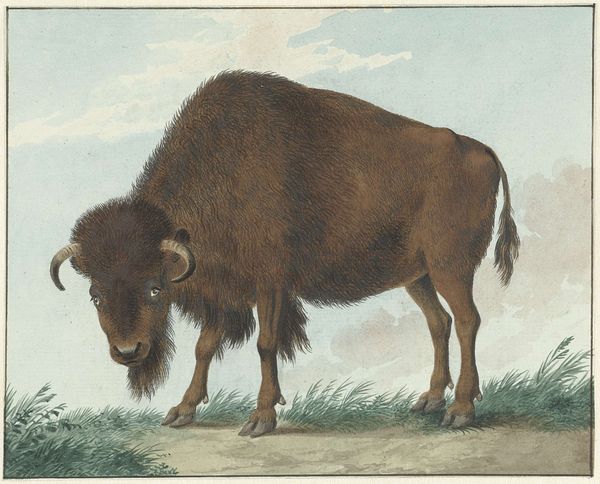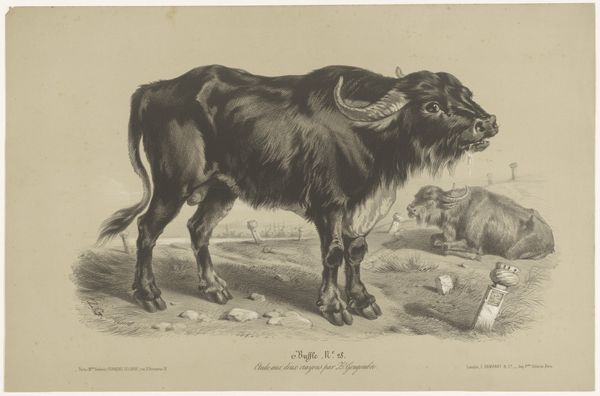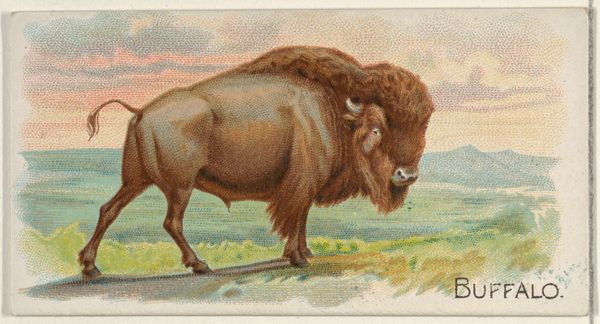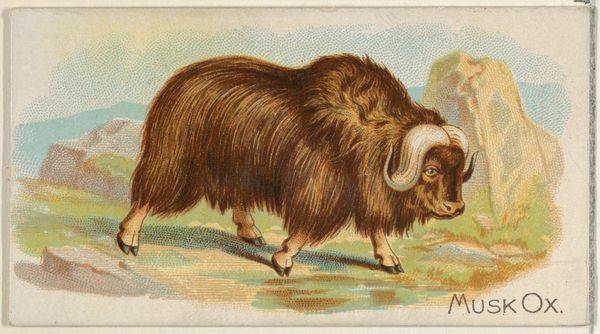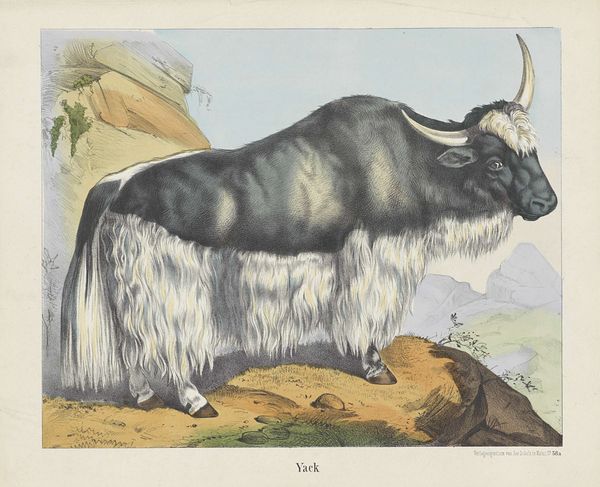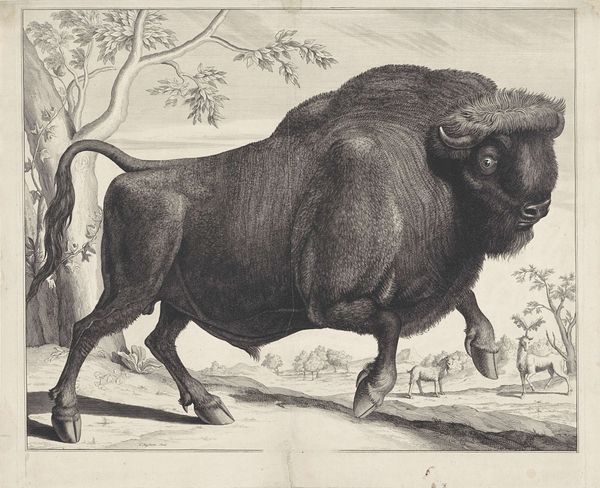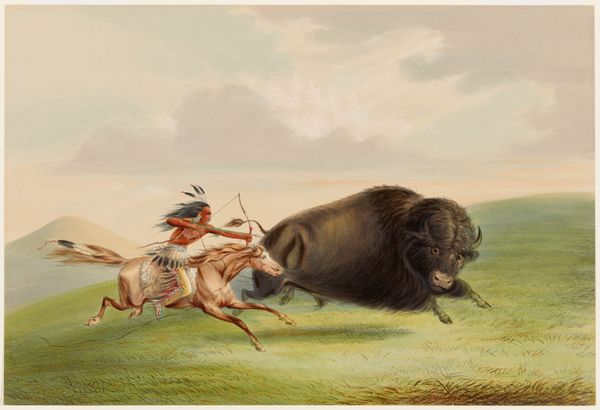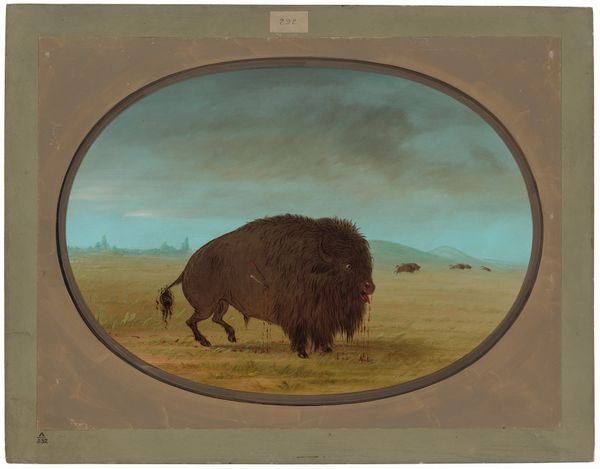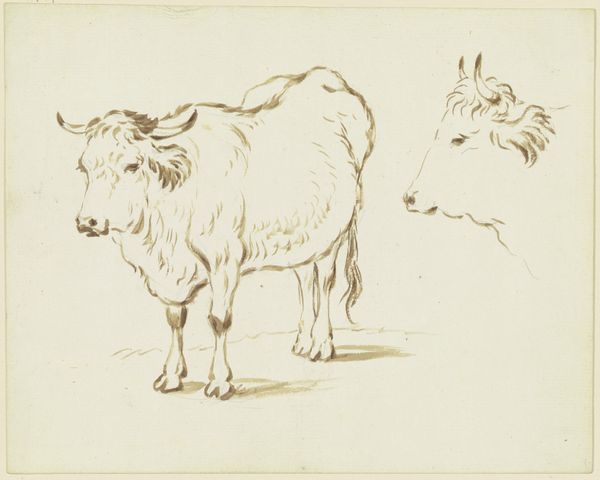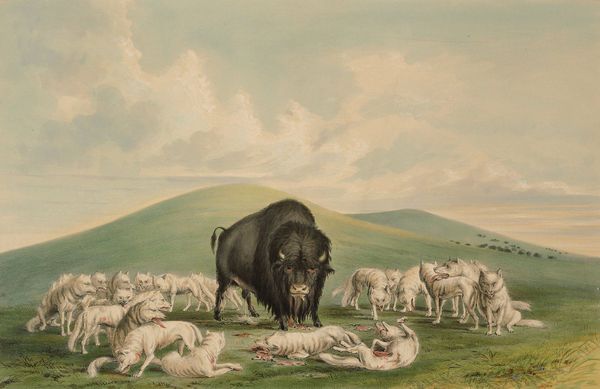
painting
#
painting
#
romanticism
#
animal portrait
#
watercolour illustration
#
watercolor
Dimensions: 12 x 17 3/8 in. (30.48 x 44.13 cm) (image, sheet)
Copyright: Public Domain
Curator: This is George Catlin's "The American Buffalo," created around 1844. Notice how the artist captured the essence of this magnificent creature using watercolor and print techniques. What are your immediate thoughts? Editor: He looks… regal. Intimidating but also strangely peaceful. The wispy tail gives him character, and there’s something about the slightly out-of-focus mountains in the back that feels expansive, like freedom. I wonder what stories that buffalo could tell, if he could talk. Curator: An interesting observation, quite telling regarding the romantic interpretation often found in animal portraits! The loose watercolor application contrasts with the sharper details achieved through printmaking—observe the details around the eyes and fur; the effect certainly contributes to its noble mien. Note too how Catlin plays with scale, suggesting both the buffalo's imposing physicality but also its relation to the environment it inhabits. Editor: He’s almost blending into that sandy-yellow background, yet the texture he's given that fur is incredibly distinct, somehow tangible, so he pops right off the scene! Does the colour palette reflect some broader narrative that Catlin attempts to construct? It appears very different from traditional American indigenous paintings from the era. Curator: Indeed, his palette is strategic, echoing the subtle variations in the animal's fur while anchoring it within the earthy tones of its natural environment. There is of course a certain element of exoticization too; Catlin, as a Romantic artist, frequently employed these somewhat sentimental visions of untouched wilderness. But one might also claim that, by depicting it in this romantic light, Catlin may have also been suggesting a degree of pathos as a way of underscoring his conservationist position towards Native American life and land use. Editor: Knowing it's from 1844 suddenly puts everything into a stark perspective—the buffalo isn't just standing here; it's bearing witness to change. I find myself imagining the plains teeming with these incredible animals... vanished by human enterprise. There is immense melancholic beauty to that, though... it lingers long after one has departed from this work. Curator: An affecting encapsulation; thank you. Catlin’s work prompts complex emotional responses, oscillating between appreciation of technique and the recognition of inherent ecological and cultural tragedy that occurred during Westward expansion, to great degree captured by the stoic nobility within this piece. Editor: An encounter with a lost world… one could muse upon those themes all day long!
Comments
No comments
Be the first to comment and join the conversation on the ultimate creative platform.


